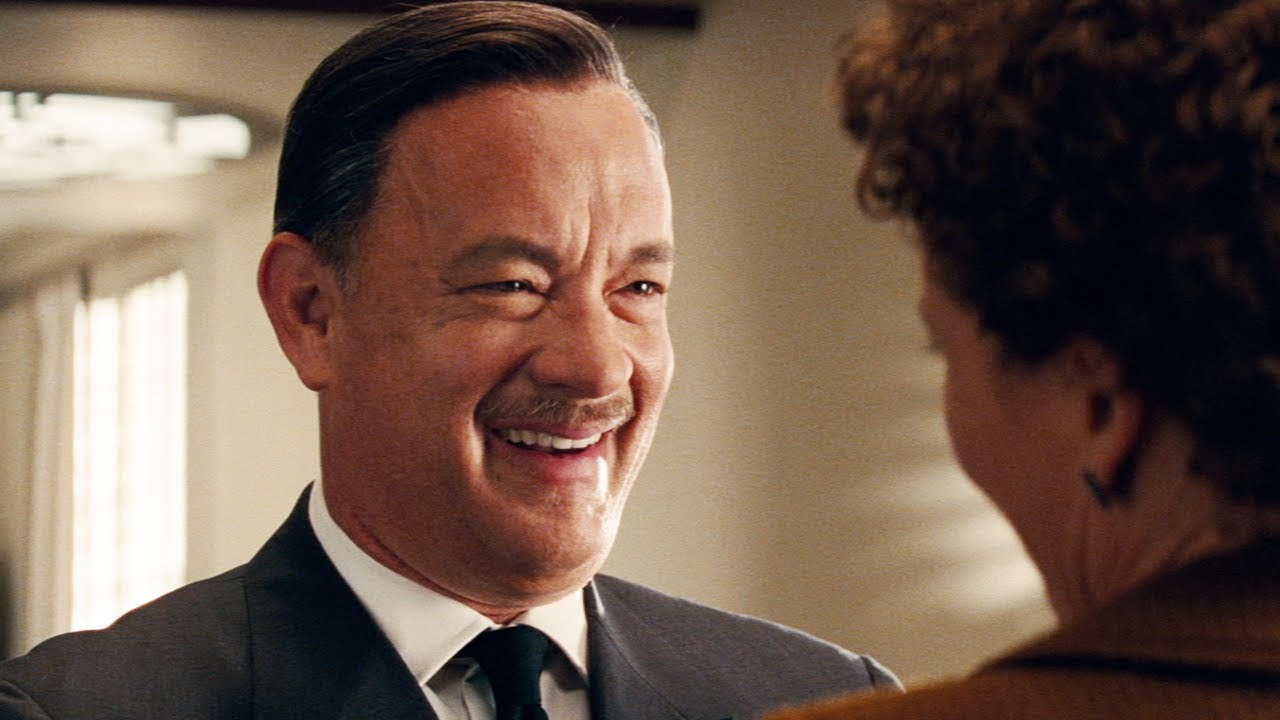Title: Saving Mr. Banks
Walt Disney Pictures
Reviewed for Shockya by Harvey Karten. Data-based on RottenTomatoes.com
Grade: B+
Director: John Lee Hancock
Screenwriter: Kelly Marcel, Sue Smith
Cast: Emma Thompson, Tom Hanks, Paul Giamatti, Jason Schwartzman, Bradley Whitford, Annie Rose Buckley, Ruth Wilson, B.J. Novak, Rachel Griffiths, Kathy Baker, Colin Farrell
Screened at: NYC, Regal E-Walk, 12/9/13
Opens: December 13, 2013
J.K. Rowling became the richest woman in England for her Harry Potter book, which not only sold four hundred million copies but gained even a wider audience through the movie adaptations. You’d think that anyone would jump at the chance to get a Hollywood producer to sign you up if you wrote a novel, since the proceeds of your movie contract would likely exceed the royalties from your writings. Not so, P.L. Travers whose books on Mary Poppins captured the interest of Walt Disney when his kids begged their dad to make the classic into a screen version. You’ve got to be a mighty negative person to resist Walt Disney’s pleas to get you to sign on, and John Lee Hancock, using Kelly Marcel and Sue Smith’s screenplay, created one of the most negative people imaginable in the major role.
The movie slogan states, “When her story ended, their real story began,” as “Saving Mr. Banks” is the behind-the-scene campaign to win authorial rights to make the novel into a movie. What’s her problem? According to John Lee Hancock’s film, the author, who had a childhood devoted to her father but one that was marred by poverty, did not want to allow Disney to insert that spoonful of sugar to make the medicine go down. She believed that the public deserved a realistic view of the kids who became charges of a magical nanny, Mary Poppins. No music, no dancing, and especially no animation. Any other author would be given the heave-ho if she demanded such rights to control the screen version, but Disney persisted, his twenty-year campaign serving as a backstory that is almost as entertaining as the eight Travers books themselves.
In fact, “Saving Mr. Banks” is so delightful that many a patron of the film will go back and buy the complete series of Mary Poppins books. Goldderby.com, the leading Oscar prediction site on the web, has just come out with a prognostication that the movie has a good chance of “Best” awards, placing just behind “12 Years a Slave” and “Gravity,” according to word of mouth chatter in Hollywood.
The film breezes seamlessly between the childhood of the author, whose real name is Helen Goff and who is played delightfully as a child by Annie Rose Buckley. The story opens in the sticks of Australia in 1906 (excellent cinematography from John Schwartzman) where young Helen, who later takes the first name of her father, Travers Goff (Colin Farrell), is one of three children. She adores her dad, who dotes on her and is indifferent to her struggling mother (Ruth Wilson), though her dad’s drinking may have made him into a magically good-natured fellow to the young girl but creating misery for the harried mother.
Switching to 1961, Hancock shows an eager Walt Disney (Tom Hanks) going full throttle to seduce the author now known as P.J. Travers (Emma Thompson), giving her a first-class seat from her elegant London home to L.A. Travers’s book royalties had dried up, leading her to worry that she may lose her home in a fashionable London neighborhood. Yet for most of this movie, she appears more willing to lose her home than to agree to what she considers would be a vulgarized, sanitized, saccharine Disney movie, especially loathing the idea that animated penguins would dance with Dick Van Dyke.
The ensemble cast profits from insights into the “Mary Poppins” scripter, Don DaGradi (Bradley Whitford) and lyricists Richard Sherman and Robert Sherman (Jason Schwartzman and B.J. Novak). How Disney was able to convince P.J. Travers to sign is revealed near the conclusion, though one wonders why he did not think of using psychology on her during the last two decades.
Though Travers appears to be content with the way “Mary Poppins” turns out when she first screens it at the Hollywood premiere, in reality she felt abused by Disney and refused rights to sequels. She also made sure that the Broadway version would be made only if nobody from the film crew would have anything to do with it.
Side roles are aces: Paul Giammati as Ralph the chauffer, the only American that Travels liked, Ruth Wilson as the put-upon mother who attempts suicide. But in the principal roles, Tom Hanks has the looks and personality of the great Walt Disney, while Emma Thompson looks like an Oscar candidate for Best Actress for her role as a neurotic snob, offended by what she perceives as American vulgarity (like our insistence on using first names) and the array of cakes laid out as she interviews with the creative team.
Rated PG-13. 125 minutes © 2013 by Harvey Karten, Member, New York Film Critics Online
Story – B+
Acting – B+
Technical – A-
Overall – B+

